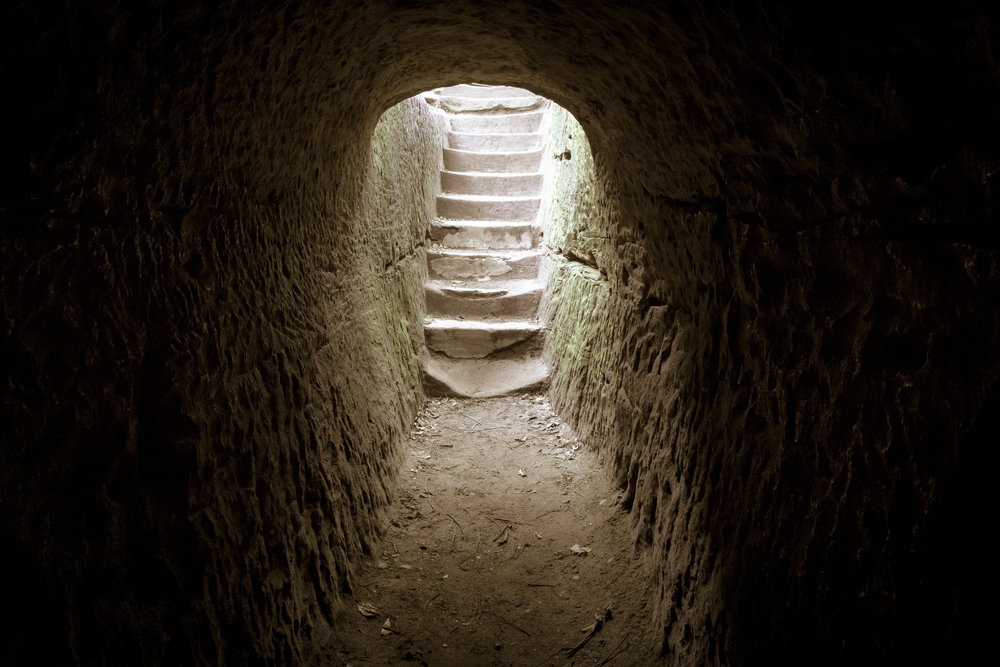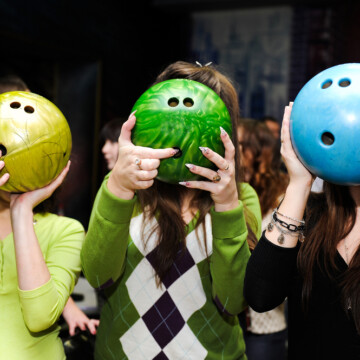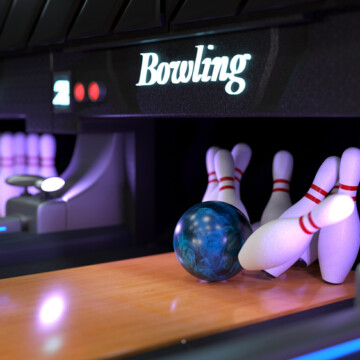
One of America’s greatest pastimes, that is what the sport of bowling has become known as to so many of us. Despite it being so popular, most casual bowlers know very little about the invention of bowling.
Throughout the years bowling has grown and evolved into one of our most beloved sports, enduring through the decades to become the social pastime we know and love today.
Great for family fun, friendly bowling competition or high stake professional play, this sport has a long history of providing quality entertainment while challenging individuals of all ages and abilities with strategic gameplay.
As individuals from all walks to life take part in this sport they may find themselves asking a seemingly simple question, “Who exactly invented bowling anyway?”.
The answer to this seemingly simple question is actually quite complex.
Contents
- 1 How Did History Shape Bowling as We Know It?
- 2 How Did the Egyptians Bowl?
- 3 How Did Bowling Affect European Culture?
- 4 Who Made the First Bowling Ball?
- 5 How Did Bowling Get Its Name?
- 6 Who Brought Bowling to America?
- 7 Why Is the History of Bowling so Unclear?
- 8 What Is Nine Pin Bowling?
- 9 Why Was Nine Pin Bowling Banned?
- 10 When Did Bowling Become a Uniformed Sport in America?
How Did History Shape Bowling as We Know It?

Unfortunately, the name of the person who is responsible for the creation of this great game has been (so far) lost to history. While we don’t know the individual’s name, we do have an idea of when and where bowling was invented.
In 1934 a British anthropologist by the name of Sir Flinders Petrie and his team unearthed the grave of an Egyptian boy that dated back to 3,200 BC.
In this grave, the remains of crude bowling balls, pins, and other similar equipment were recovered, dating the game of bowling as far as 5,000 years in the past.
This means that bowling was around during the reign of one of Egypt’s first pharaohs, before the Olympics, before the Roman Empire and when wooly mammoths still walked the Earth!
Key Takeaways
- Bowling, an ancient sport, dates back to 3,200 BC, evidenced by an Egyptian boy's grave containing early bowling equipment. This shows its roots predating significant historical events like the Olympics and the Roman Empire.
- The game evolved over millennia, with notable developments including the introduction of Kegels (pins) in Germany around 300 AD and the transition from wooden to rubber bowling balls in 1906, later advancing to plastic and polyester in the 1960s-70s.
- Bowling's name likely stems from German roots, reflecting its historical evolution from a religious custom involving Kegels to the modern sport known globally.
- The sport arrived in America through British settlers and possibly Dutch explorer Henry Hudson's crew. Over time, it adapted to influences from various cultural traditions and became a significant social pastime.
- Bowling's formal organization began in 1875 in New York, leading to the American Bowling Congress in 1895 and the Women’s International Bowling Congress in 1901, setting standardized rules and fostering the sport's growth into professional and social arenas.
How Did the Egyptians Bowl?
Now, while this grave is the most current early relation of the pin bowling game we know and love today, it could even date back a little further. Anthropologists have discovered evidence that ancient Egyptians also played a game similar to bowling.
This game, which dates back to 7,200 BC, consists of a lane that has a small hole in the middle. Instead of one player, this was actually a two-player game, with one player holding a small ball and the other player holding a larger one.
It is thought that the goal of the game was for the player with the smaller ball to try and get their ball in the hole while the person with the larger ball would stand on the opposite side of the lane and try to stop them with their larger ball.
Jars filled with sand were located below the hole for easy small ball retrieval, indicating that turns were taken.
Ancient Egyptians were also the first to show evidence of using indoor bowling alleys to play their games.
Lanes that were used for both the two-person ball game and the early bowling games have been unearthed in different locations, with evidence of these games slowly traveling into the surrounding cultures around Egypt.
How Did Bowling Affect European Culture?
After the ancient Egyptians, the next modern relative of our favorite sport can be found in Germany. Sometime around 300 AD pins were officially introduced through the use of Kegels, pin-like structures that Germans carried around for sports and protection.
The players would set up the Kegels and take turns rolling rocks towards the upright pins. If yours was knocked down your sins were forgiven!
After the Germans, the game of bowling continued to evolve and grow, finding its way to England and gaining major popularity under King Henry VIII. During his reign bowling was seen as a symbol of status and nobility and many variations of the game were born during this time.
Who Made the First Bowling Ball?
It is believed that the first official bowling balls were created in Hunan China and were made out of wood. The wooden balls endured for many years until 1906 when the world of bowling balls was rocked by the introduction of the first bowling ball made out of rubber.
These rubberized balls were then used until the 1960-70s, which is when bowling balls with plastic and polyester coverstocks were introduced.
Over the course of the past fifty years, the use of technology has caused bowling balls to evolve even more, with high-grade coverstocks, drill holes, cores, and weight plates coming in to play.
| Era/Development | Key Features | Significant Milestones |
|---|---|---|
| Ancient Egypt (3200 BC) | Origin of bowling with equipment found in a child's grave | Earliest known form of bowling |
| Western Europe (300 AD) | Introduction of Kegels (pins) in Germany; evolution into a social and religious activity | First significant evolution of bowling equipment |
| England (King Henry VIII’s reign) | Lawn bowling gains popularity as a symbol of status and nobility | Spread of bowling across Europe |
| Hunan, China | Creation of first wooden bowling balls | Technological advancement in bowling equipment |
| 1906 | Introduction of the first rubber ball with finger holes | Major technological leap in bowling equipment |
| Early 20th Century (Beethoven Hall) | Establishment of first tenpin lanes | Expansion of indoor bowling |
| 1875 & 1895 | Formation of the National Bowling Association and the American Bowling Congress | Standardization of rules and organization of the sport |
| 20th Century Onwards | Women’s International Bowling Congress, British Tenpin Bowling Association, Young American Bowling Alliance involvement | Expansion of league play, professionalization, and global outreach |
| Modern Era | Advancements by equipment manufacturers like Brunswick Corporation; equipment testing | Continued innovation and global popularity |
How Did Bowling Get Its Name?
While there are many theories on how bowling received its name; such as deriving from Saxon, Old French or Latin words, the word can be traced back to German roots.
This makes sense due to the evolution of modern-day bowling being thought to start in the German religious custom involving kegels.
Thanks to the ancient and muddled history of one of mankind’s oldest sports we are not exactly sure who the person was to come up with the term bowling, just that they were almost for certain a citizen of Germany who probably lived around 300 AD.
Who Brought Bowling to America?
There is some discrepancy of who exactly brought bowling over to America, much like there is a discrepancy in much of bowling’s history.
There is evidence of British settlers bringing lawn bowling to the US as a game to play since the sport was very popular in England at the time. Another party of interest would be those found in the employment of Dutch explorer, Henry Hudson.
Hudson and his crew were said to have brought over a form of the game that included pins. Whatever the case may be nobody knows for sure which party first introduced the game to America, mainly due to the inconsistent use of bowling-related terms and their meanings.
As more and more immigrants journeyed to the US to claim America as their new home they brought a widespread of cultural customs with them. No doubt bowling was also affected by the influx of various traditions, rules, and cultures.
As different people brought different ways to play the game bowling expanded, evolved, and grew, turning into the modern American game we are familiar with and play within our bowling alleys today.
Why Is the History of Bowling so Unclear?
The murkiness of bowling’s history comes from the fact that this game is truly one of the oldest games to be played by mankind.
Traces of the game can be found as far back as 7,200 BC through the bowl game ancient Egyptians played, that is 9,000 years of history for one sport!
The Egyptians are also only one form of the game, as different cultures adopted the sport into their own customs bowling grew and changed in ways that haven’t been fully rediscovered by modern technology.
Since there is such a huge period of time for bowling to evolve as well, when and where these evolutions took place and who created them have been lost in time.
History has also not been thorough in its documentation of the sport as it grew and evolved. Not many who played and changed the sport thought to record what they had done and how the game had grown under their care.
There are huge gaps of knowledge missing in bowling’s timeline and historians can only put in pieces that they find through anthropological research and historical digs.
It is due to this lack of knowledge that historians can only glean what we know today of bowling’s evolution out of records in which bowling snuck its way into documentation.
What Is Nine Pin Bowling?
Before the era of ten-pin bowling we know and love today, bowling was usually played with nine pins.
These pins were generally smaller than the ten pins we are familiar with and were set up on the end of a plank.
This plank was generally sixty to ninety feet in length (bowling lanes today are sixty feet) and was only twelve to eighteen inches wide, a huge difference from the multi-boarded lanes we use today.
In nine-pin bowling, the ball was also quite different compared to the bowling balls we use today. The balls we use today need to be cradled in one hand, supported with the other, can have a variety of weights, can be made of different materials and has holes drilled in different for grip and release support.
Nine pinballs had none of these things. Instead, the nine pinball was a small ball that fits in the palm of your hand, was generally made of the same material, and had no holes on its surface for gripping.
Like the tenpin game we are familiar with today, nine pin bowlers needed to roll their small, palm-sized balls to the nine pins with the goal being to knock as many pins down as possible.
This may have been easier said than done though, due to fact that they needed to hurl this tiny weight down a ninety-foot plank and hope the balls stayed on the plank in the process!
Why Was Nine Pin Bowling Banned?
Unfortunately for nine pin bowling, a problem had followed it from over the ocean and to America, gambling. Many people used nine pins as a means to gamble away their money and crime-related problems began to pop up.
The problems got so bad that states began to ban playing nine pins, stating that any games using “nine pins or less” were illegal and lawful action could be taken should any bowling be discovered.
This banning eventually lead to perhaps one of the best evolutions of bowling, the tenth pin. In order to work their way around legislation, people began to add a tenth pin to their nine pin games.
While there is some early evidence of the use of tenpin bowling before the banning took place, due to the outlawing of nine-pin bowling the use of ten pins in bowling took off throughout America.
When Did Bowling Become a Uniformed Sport in America?
As more and more immigrants began new lives in America bowling really took off as America’s favorite past time. Variations and different rules ran rampant through the street and there was no organized rule book or set of regulations for bowling.
Around 1875, however, bowlers from nine different clubs in New York got together to create set legislation for the game of bowling, calling themselves the National Bowling Association.
With the forming of this group a new problem arose, the National Bowling Association was not nationally recognized. As arguments between the New York based association and everyone else continued, another organization, the American Bowling Congress, was finally founded in 1895.
The American Bowling Congress, or ABC, set forth to organize the game of bowling into a full-fledged sport, with a complete, standardized set of rules and customs for the game of bowling. When the Women’s International Bowling Congress (WIBC) was founded in 1901, they joined the ABC in regulating the sport and organizing its gameplay.
Once the organization was founded and the rules and how to play the game were organized, tournaments began in both organizations.
As bowling grew, so did the organizations and their events as bowling traveled throughout the nation as a regulated sport, not just a gambling game.
As the decades went by the sport of bowling grew in popularity, inventions such as new bowling balls, automatic pin machines and modifications in usefully equipment giving the sport huge advantages.
Professional athletes stepped out onto the scene, creating a livelihood out of the game and pushing the sport into new limits. Giving life to championship bowling and the ladies pro bowlers tour.
Bowling clubs also began to pop up, and organized play that encouraged social interaction and teamwork started becoming more popular.
The world of bowling changed into something new and exciting over the course of a few decades.
There are, of course, many different variations of the game of bowling found throughout its 9,000-year-old history that has helped with the game’s evolution.
Different cultures had different rules, different methods of playing or used different equipment. Different people of different ages played different variations and left their imprint on the game as time marched on.
My Final Words
Bowling's journey from the graves of ancient Egypt to the modern lanes of the world today encapsulates a rich tapestry of cultural evolution, technological advancement, and communal spirit. Originating as a form of entertainment and possibly religious ceremony, as suggested by the nine pieces of equipment found with an Egyptian child buried circa 3,200 BC, bowling has traversed through Western Europe, gained prominence in American literature through works like Washington Irving's "Rip Van Winkle," and evolved into a sport with a global footprint.
The introduction of the first rubber ball, equipped with finger holes, marked a significant technological leap, mirroring the sport's transition from lawn bowling to indoor play across the first tenpin lanes, such as those in Beethoven Hall. As bowling began its formal organization, entities like the British Tenpin Bowling Association and the Young American Bowling Alliance have fostered its growth, guiding it through league play, equipment testing by manufacturers like Brunswick Corporation, and the elevation of women bowlers. This evolution culminates in the world tournament scene, where the sport's ancient roots and modern incarnation blend seamlessly, offering a universal appeal that transcends time and geography, proving bowling's enduring allure and significant impact on sports and society.
One thing does remain clear though, as we walk through the timeline of this great sport. No matter how it was played, who played it or how it varied, bowling was a sport that has lasted through the ages and will continue to do so.
Kira Byrd, a Certified Fraud Examiner, holds a B.S. in Accounting from the University of Alabama at Birmingham. With a passion for bowling from her childhood, Kira has poured her expertise and personal experiences into creating and nurturing Bowling For Beginners. Kira's mission is to meet new bowlers where they are and guide them toward consistently achieving higher scores. With a focus on skill development and strategic techniques, she empowers readers to take control of their game and unlock their true potential.
Bowling For Beginners embodies strict editorial integrity, ensuring reliable and unbiased information. Kira's commitment to delivering valuable insights and practical strategies is reflected in every article. Here's an explanation of our editorial policy and how we get money.





